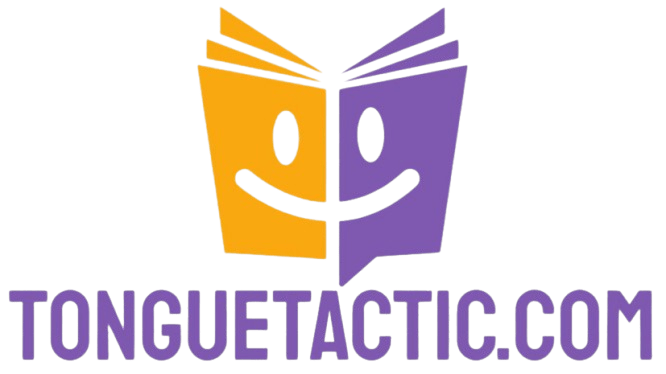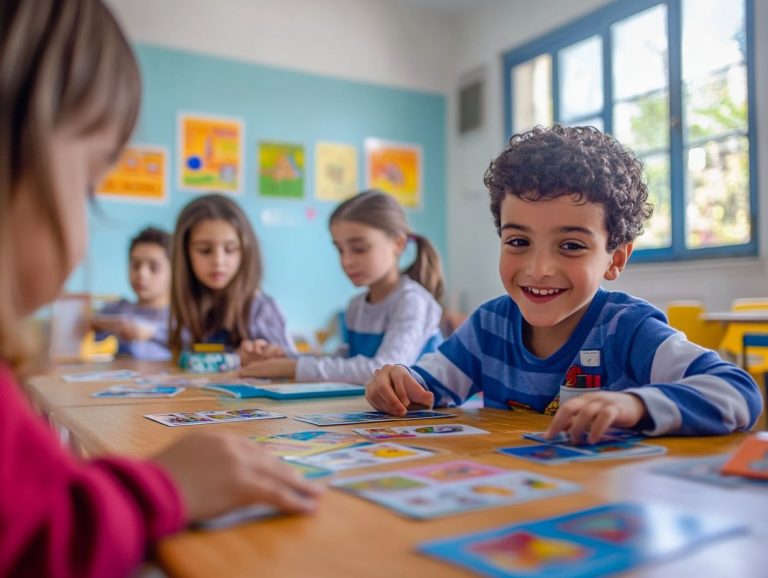the power of context in language learning
Get ready to explore! Context plays a vital role in your journey of language learning, shaping how you acquire and use new languages. Through social interactions, cultural nuances, and the linguistic environment around you, context enhances your understanding and retention.
This exploration delves into the various types of context and how they influence your vocabulary acquisition and comprehension. You ll also discover effective strategies for embedding context into your learning activities, along with common challenges that may arise with this approach.
Prepare to uncover the transformative power of context as you master a new language!
Contents
- Key Takeaways:
- The Role of Context in Language Learning
- Types of Context in Language Learning
- How Context Affects Language Learning
- Strategies for Using Context in Language Learning
- Tackling Challenges in Contextualized Learning
- Frequently Asked Questions
- What is the power of context in language learning?
- How does the power of context affect language learning?
- Can the power of context improve language proficiency?
- How can teachers utilize the power of context in language learning?
- Is the power of context equally important for all language learners?
- Can the power of context be used in self-directed language learning?
Key Takeaways:

- Context helps deepen your understanding of a new language.
- Types of context include social, cultural, and linguistic.
- Incorporating real-life scenarios enhances language skills.
The Role of Context in Language Learning
The role of context in language learning is essential. It profoundly influences how you understand and use language through various avenues, such as social situations, cultural nuances, and real-world applications, highlighting the power of language learning through storytelling.
Context serves as a crucial element in language acquisition and significantly bolsters your communication skills by providing a solid way to communicate.
Educational theories by John Dewey and Kurt Lewin support the necessity of context-driven approaches in effective language education.
Understanding the Importance of Context
Understanding the importance of context in language learning is essential for developing both implicit competence and explicit knowledge. This understanding significantly influences how you engage with vocabulary, grammar rules, and communication strategies.
Recent studies in the study of how our brains work when learning reveal that contextual cues can greatly enhance your memory retention and comprehension. This means that you’re more likely to learn effectively in environments with relevant context.
For instance, immersing yourself in real-life scenarios aids in recalling vocabulary and fosters an intuitive grasp of complex grammar structures.
Learning activities that use context push you to adapt your communication styles, nurturing a deeper understanding of pragmatic language use. By incorporating context into your learning, educators can optimize outcomes and create meaningful connections between language and everyday situations, ultimately leading to a more profound and lasting mastery of the language.
Types of Context in Language Learning
In language learning, you encounter various types of context, each serving a unique purpose. Social, cultural, and linguistic contexts all play pivotal roles in shaping how you acquire and utilize language effectively.
Understanding these dimensions can significantly enhance your learning experience and proficiency.
Social Context
Social context plays a pivotal role in your journey as a language learner by offering opportunities for interactive dialogues and meaningful interactions that truly enhance your communication skills.
In such environments, collaborative learning thrives, enabling you to engage with fellow learners and exchange diverse perspectives. When you participate in group discussions, you re not just honing your language abilities; you re also building confidence through the invaluable support of your peers.
These shared experiences foster a sense of belonging, transforming language acquisition into a more approachable and enjoyable endeavor. As you immerse yourself in various cultural contexts, your learning journey becomes richer, allowing you to grasp the nuances of communication and adapt your expressions accordingly.
This interconnectedness builds effective communication, key to mastering any language!
Cultural Context

Cultural context enhances your language learning. It weaves in cultural nuances that enrich your understanding.
This integration allows you to grasp not just words and grammar, but also social cues, humor, and traditions in communication.
For example, mastering unique idioms boosts your conversational fluency. Understanding local customs and etiquette helps you engage with native speakers.
This holistic approach fosters empathy and respect. It creates a dynamic learning environment where you appreciate the connection between language and culture.
Ultimately, this leads to deeper proficiency beyond mere vocabulary, enriching your communication skills.
Linguistic Context
Linguistic context is essential for mastering grammar and vocabulary. It enhances your reading comprehension and language use.
Situational cues elevate your learning experience. You learn to understand meanings and apply them in different scenarios.
This understanding is crucial when facing idioms or complex grammar. Engaging with contextualized language sharpens your linguistic intuition.
A structured approach to language instruction that emphasizes context will improve your grammar and vocabulary development.
How Context Affects Language Learning
Context greatly affects your language learning experience. It enriches vocabulary acquisition and enhances comprehension.
This highlights the importance of integrating context into teaching methods.
Enhancing Vocabulary Acquisition
Context plays a major role in enhancing your vocabulary. Engaging in contextual exercises provides practical scenarios that reinforce your understanding of words.
For instance, role-playing activities immerse you in real-life conversations. This solidifies your retention of vocabulary in a meaningful way.
Using multimedia resources, like videos or interactive games, introduces new terms in context-rich environments. This makes your learning journey enjoyable and effective.
Journal writing helps you reflect on your experiences. It encourages you to use new vocabulary in context, further solidifying your grasp.
Leverage these strategies to build a strong vocabulary foundation that benefits your communication skills.
Improving Language Comprehension
Your language comprehension is closely tied to context. It helps you deduce meaning and grasp nuances, which are essential for effective learning.
Using innovative teaching practices creates rich contextual environments. These inspire students and deepen their appreciation of language intricacies.
This shift acknowledges that context shapes how you process information. As you prioritize context, you nurture critical thinking and communication skills.
Adapt your methods to foster effective language acquisition.
Strategies for Using Context in Language Learning

Implementing strategies that leverage context in language learning, such as contextualized learning activities and real-life applications, is essential for cultivating effective teaching methods.
By focusing on these approaches, you can enhance the learning experience, making it more relevant and engaging for students.
Contextualized Learning Activities
Contextualized learning activities greatly enhance student engagement. They achieve this through dynamic dialogues and real-life scenarios.
When you incorporate project-based learning, students tackle real-world problems. This motivates them to collaborate and apply their knowledge practically.
This method nurtures critical thinking and essential teamwork skills. Students navigate complex challenges together.
Simulations that replicate professional environments immerse learners in hands-on learning, effectively bridging the gap between theory and practice. By actively participating in these meaningful experiences, students often demonstrate improved retention of knowledge and a deeper understanding of the subject matter, ultimately leading to more positive learning outcomes.
Real-life Application of Language Skills
The real-world application of language skills is crucial in your language learning journey, as it enables you to practice communication strategies in genuine interactions.
Participating in community service programs boosts your language skills. You practice communication in real situations while navigating cultural nuances.
Picture yourself volunteering at a local food bank, coordinating with a diverse group of team members while communicating with beneficiaries. These experiences solidify your understanding and boost your confidence, creating lasting connections that pave the way for fluency.
The more relevant these applications are to your life, the more effectively you ll assimilate new vocabulary and syntax into your everyday conversations.
Tackling Challenges in Contextualized Learning
Tackling challenges in contextualized learning can transform your teaching! Overcoming issues such as language barriers and cultural differences is crucial for establishing effective teaching practices that elevate the learner experience.
By addressing these complexities, you can create an environment where all students thrive and engage meaningfully with the material.
Addressing Language Barriers
Addressing language barriers in education is essential for fostering effective communication skills and ensuring that context-driven approaches are successfully implemented.
You can employ a variety of strategies to create an inclusive environment that encourages active participation from all students, regardless of their linguistic backgrounds.
For instance, utilizing visual aids, gestures, and interactive activities can significantly enhance understanding. Tapping into local contexts and cultural references not only makes learning more relatable but also helps bridge gaps between different languages.
Establishing a supportive atmosphere where students feel comfortable making mistakes is crucial for building their confidence.
Integrating technology, like translation apps, enriches the learning experience, making it accessible for everyone involved.
Dealing with Cultural Differences

Navigating cultural differences in contextual learning is vital for creating meaningful interactions. This ensures that your teaching methodologies effectively respond to diverse backgrounds.
By acknowledging the unique values, beliefs, and communication styles that learners bring to the classroom, you can create a welcoming space for everyone. This approach enriches the overall learning experience and helps avoid misunderstandings that might arise from cultural gaps.
Using storytelling, local customs, and multilingual resources significantly enhances engagement and fosters cultural sensitivity.
As a language instructor, it s essential to deepen your cultural awareness through training and ongoing dialogue. This dedication leads to more effective teaching strategies tailored to each learner’s unique context.
Frequently Asked Questions
What is the power of context in language learning?
The power of context in language learning refers to how the surrounding environment and situations influence the acquisition and use of a new language. This includes cultural context, social interactions, and real-life scenarios.
How does the power of context affect language learning?
The power of context greatly impacts language learning by providing meaningful opportunities for practice and understanding. Additionally, exploring the power of visualization in language learning helps learners develop cultural awareness and communicative competence.
Can the power of context improve language proficiency?
Yes! The power of context can significantly enhance language proficiency by offering authentic and engaging learning experiences. Being immersed in a language-rich environment boosts skills like listening, speaking, and reading comprehension.
How can teachers utilize the power of context in language learning?
Teachers can incorporate activities and materials that reflect real-life situations and cultural contexts into their lessons. Role-plays, authentic texts, and multimedia resources are effective tools. Encourage students to engage in meaningful interactions with native speakers or through language exchange programs.
Is the power of context equally important for all language learners?
Yes, the power of context is equally important for all language learners, regardless of age or proficiency level. However, the integration of context may vary based on the specific needs and goals of the learners.
Can the power of context be used in self-directed language learning?
Absolutely! Self-directed learners can seek immersion in a language-rich context by joining language exchange groups, attending cultural events, or using authentic materials for self-study. Reflecting on their own cultural background can also enhance their learning process.






